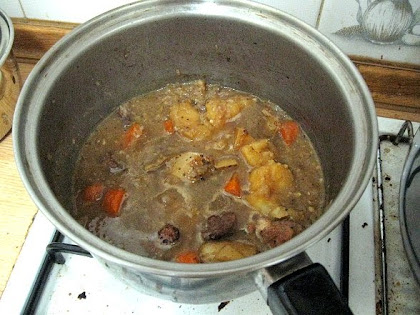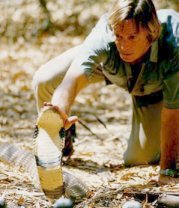The store put up about thirty-plus chairs in the beginning. We were told (or promised, rather) that more people will be coming, so the staff took out all the chairs they had (which would STILL not be enough).
Noelle Lim, Queen of the Breakfast Grille programme on BFM89.9 and the author's long-time friend was picked as the emcee for the launch.
The author, Alexandra Wong, started signing books early, almost an hour before the launch began. Her book is a compilation of selected articles from her "Navel Gazer" column in English-language daily The Star.
She got the idea of getting launch attendees to write their names on these stones from somewhere online. She plans to put these stones in a big glass bowl that will take place of pride in her new digs - another element that's in line with her community project of a book.
Every now and then, Alexandra takes time out from signing books to greet her guests and their friends and relatives. Her articles feature the whole gamut of Malaysians, from everyday people to luminaries, and she cherishes every encounter.
It got a bit hard for her to personally thank everyone who attended the launch as the day wore on. Among many of the attendees are Alex's parents and her friends/acquaintances and their relatives or friends.
Showtime was just after 3pm.
As expected, we had no problem filling seats - just getting them. Around the middle of the launch, the bookstore people brought out wooden stools from somewhere inside the store, but it remained standing room only until the end.
Noelle did a fine job as an emcee, even though she claimed this was her first time. Alex thought she'd exceeded expectations.
Singer-songwriter Ray Cheong volunteered his time and talents to open the launch. When he and Alex met, she'd begun her freelance writing career and he was selling cameras.
Now, she's an author and columnist and he's got an album (sold at indie talent venue Merdekarya) and, among other things, opened for Pixie Lott's 2012 Kuala Lumpur tour.
Like I said, no problems filling seats...
...just finding them.
Young Visaghan delivered a dramatised reading of a story in the book, "My superwoman BFF". Said superwoman is his mom, Shivanee Selvaratnam, one of Alex's childhood friends, who couldn't make it and pledged her husband, sons, mother-in-law and several relatives to stand in her stead.
Seems she coached the kid to memorise the lines by heart and, after getting Alex to eat out of his hand during his first encounter, had the audience in the palm of the same hand as well. He's like, what, only ten?
An unscheduled and surprising bit of entertainment was provided by Semai craftsman Raman bah Tuin, who took about two minutes to introduce himself and play the nose flute for the audience.
Alex went all the way to Raman's home to interview him for an article in MAS's in-flight magazine, Going Places (which is pretty much her ambition). If the audience thought his nose-flute playing was enchanting, they should hear it at his backyard, closer to nature.
The author herself finally took the stage to speak about the book and invite some "guests of honour" to share the spotlight with her.
Of course, Alex's parents were first. Their presence at the launch was significant, as she fought for years to earn their (especially her mom's) approval of her freelancing writer's career.
To Alex's surprise, Mrs Wong took the mic. The author's gung-ho, always-seize-the-moment attitude definitely came from her mother. "She never told me about this book until the last minute," Mrs Wong told the audience, to their amusement.
Quiet, dignified Mr Wong, meanwhile, isn't used to being in the limelight.
One thing she forgot to mention: that fellow sitting in the barber's chair on the cover of the book? That's her dad, Mr Wong, getting a haircut at Ipoh's Star Barber.
More and more of the guests of honour - some of the "hometown heroes" and "hidden gems" Alex encountered so far in her career - are invited up the stage and would later sign the mock book towards the end of the event.
This is, after all, their book and their stories.
I'd been sick (sinuses and itchy throat) for the past several days; I only felt a bit of it during the launch, but it got even worse later that night. And it's the first launch I actively participated in since becoming an editor....
This is a truncated version of my Facebook photo album of the event, which for some reason is still "unavailable" despite its "Public" status (Facebook can be so dysfunctional).
Made in Malaysia should be available now at bookstores in the Klang Valley, including Borders, Kinokuniya, Cziplee and, of course, MPH. Some details about the book can be found here.
Categories:
Book Blab




















































